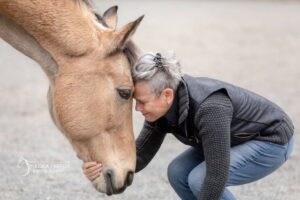
The Colorado State University Dance and Equine Sciences programs collaborated for a week in the Fall of 2023 to find connections and intersections between dance/arts and work with horses to enhance each other’s practices, learning, and research. These unlikely partners came together to find new ways of listening and discovery across disciplines.
Guest artist JoAnna Mendl Shaw and The Equus Projects were invited to work with students and faculty in residence. In the studio and the arena, they explored a common language, physical dialogue, and ways to honor and give voice to humans and equines.
The Equus Project is a New York City-based organization that creates site-specific performance works focused on visceral engagement with the natural and cultural environment. (Equus-onsite.org)
“This residency was the first time that The Equus Projects was teaching in a university with dynamic interaction from both the Dance and Equine Studies students and faculty. I see enormous potential for future such collaboration with opportunity for deeper investigations of the intersection between the dancer’s embodied thinking and horsemanship decision-making,” said Shaw.
The residency occurred in the School of Music, Theatre, and Dance at the University Center for the Arts and at the CSU Equine Teaching and Research Center. Hearts & Horses, a therapeutic riding center in Loveland, joined as a community partner. Dance and equine-interested community members were invited to participate in and observe the workshops and performances, moving together, observing horse/human interaction, and debriefing about the experience.
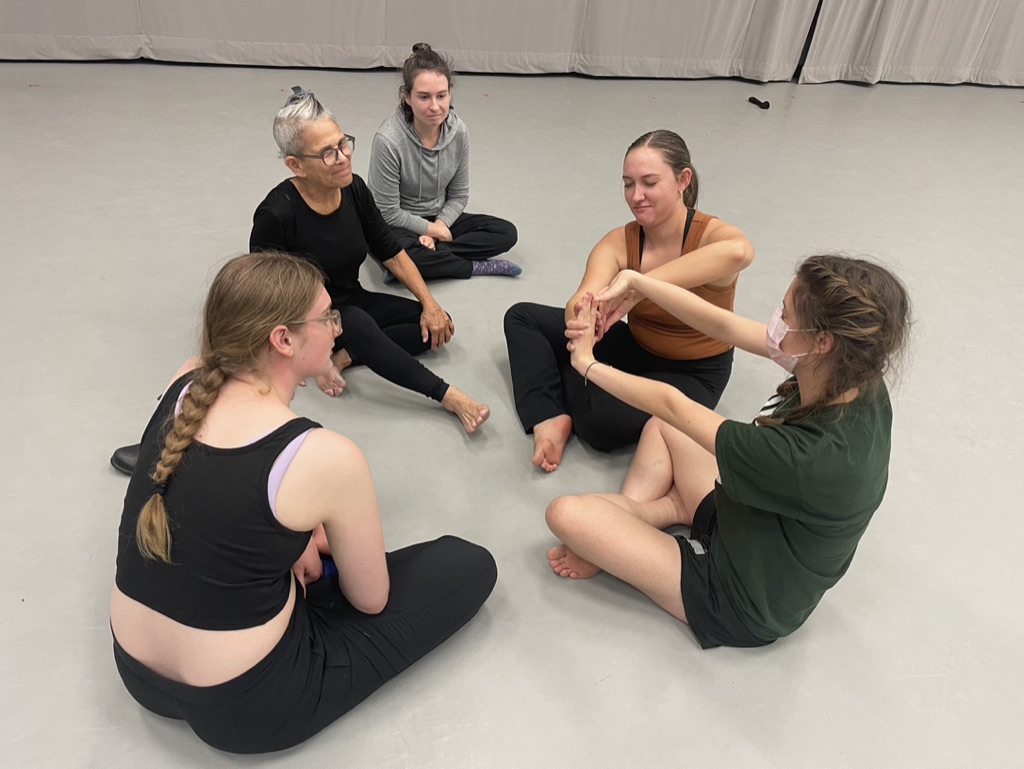
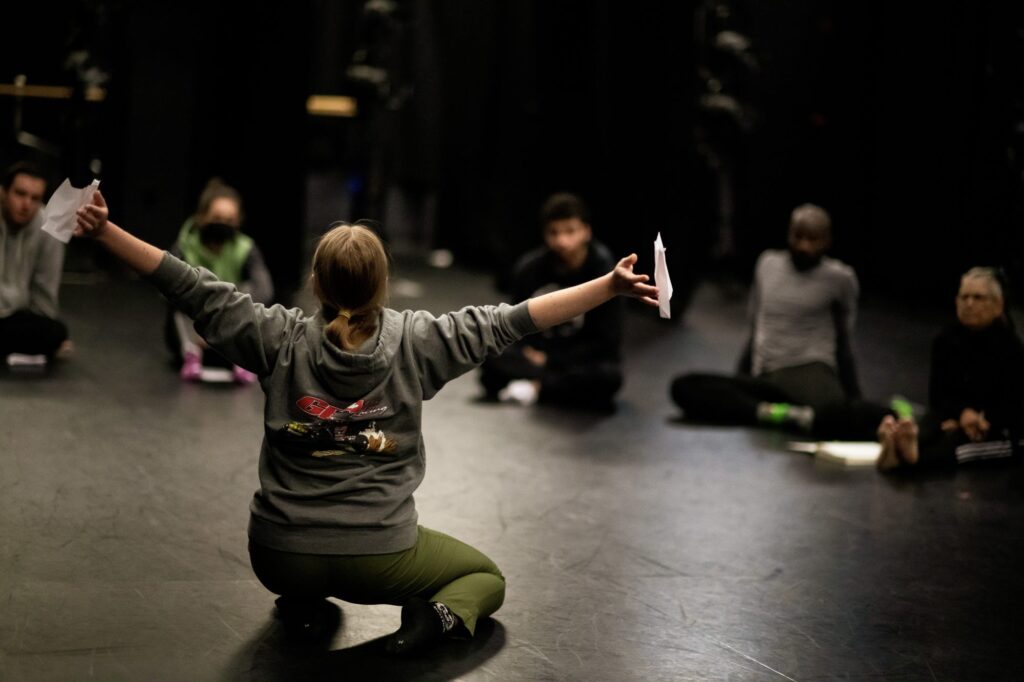

CSU Dance and Equine Sciences students in workshops with JoAnna Mendl Shaw.
Guest Artists Within Educational Settings
Guest artists facilitate the opportunity to experience the ongoing professional landscape and explore uncharted ways of thinking, learning, and problem-solving. These skills stimulate continued multidisciplinary thinking across the university in study and research.
Visiting artists are a vital component of training for CSU Dance majors. Events such as this collaboration build connections, diversify language, and increase empathy and compassion. Through its collaborative, interdisciplinary approach, the Interspecies Journey project embodied CSU Dance’s mission to create access and opportunities for students, while serving the community.
“. . . the workshops inspired me to create. The experiences she guided us through helped me understand her creative process based on intuition, community, and the environments we create. It is always a valuable opportunity to work with someone who can teach me about my creativity, and JoAnna was able to provide that,” said Grace Cooper, a recent CSU Dance graduate.
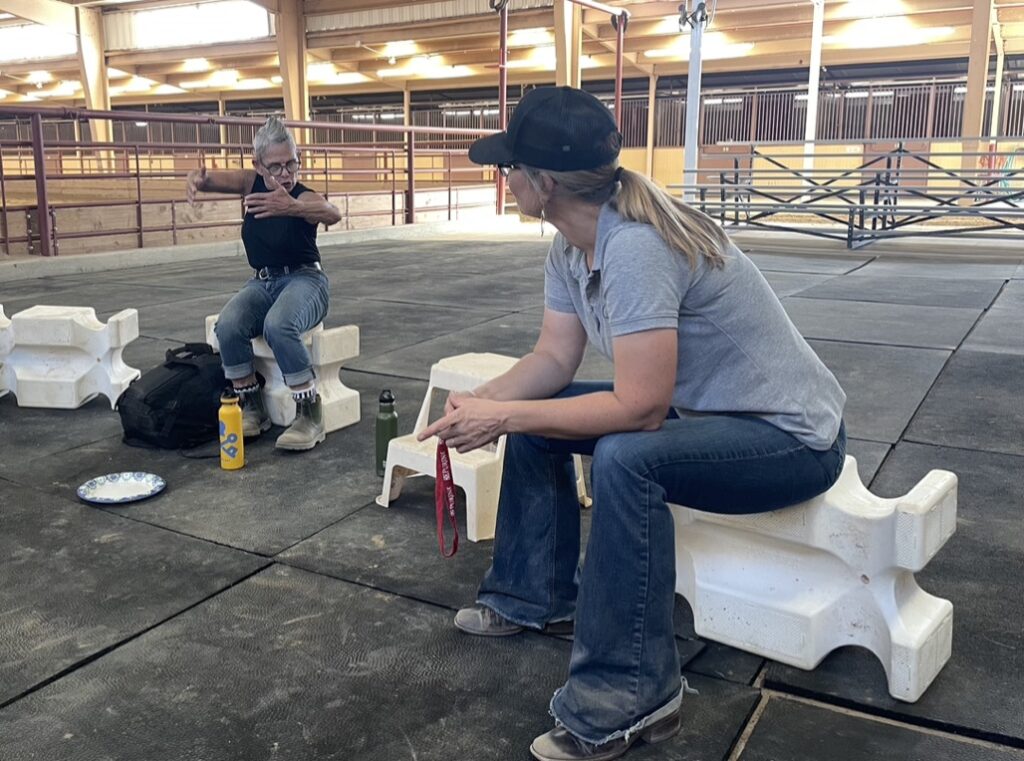
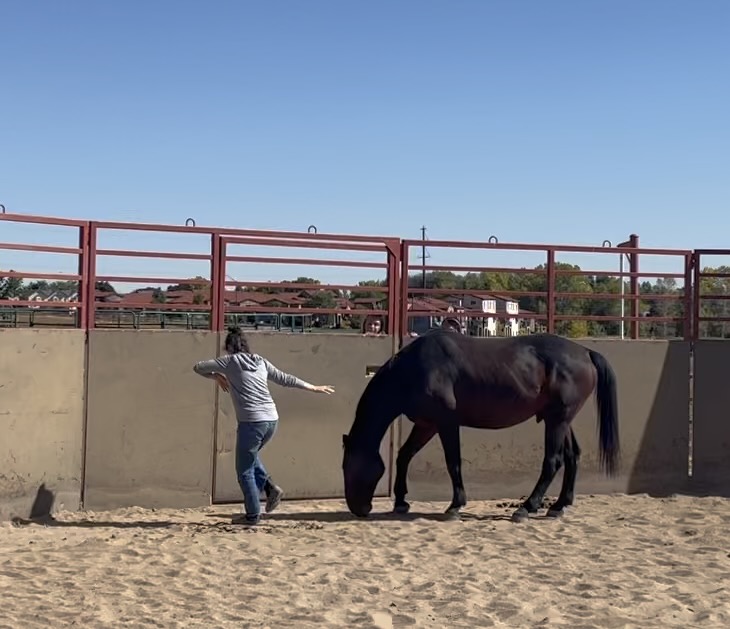
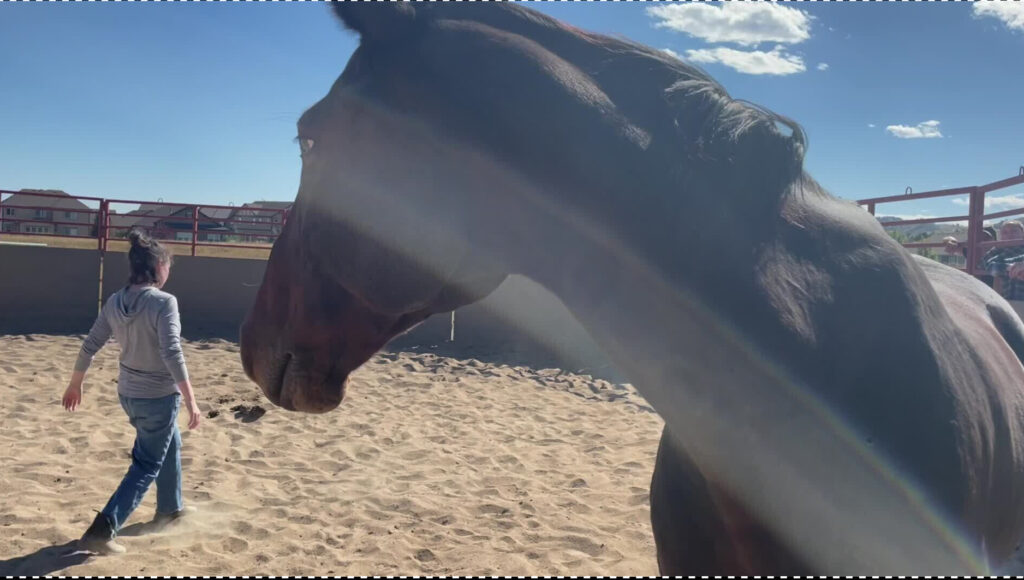
Photo 1: JoAnna Mendl Shaw with Sarah Matlock at CSU Equine Center; Photos 2 and 3: Kat Reese working in a CSU Equine Center pen
CSU Thematic Year of Democracy
Additionally, the Interspecies Journey residency was part of CSU’s thematic year of democracy and civic engagement. Each session emphasized choice-making, listening, inquiry, and creative decision-making skills. Communication through body language, patience, and cooperation capitalized on the shared collaboration and intersections of interdisciplinary and interspecies work.
Sarah Matlock, CSU Equine Sciences senior instructor and collaborating faculty, felt like the facilitation of dancing with CSU horses by JoAnna and her team of exceptional dancers was a unique privilege.
“This (almost entirely) extemporaneous form of dance features the equine partner as the inspiration for movement as the dancer moves gracefully and artfully with and around the horse,” Matlock explained. “Our equine students and faculty were captivated by the relational nature of this exchange, where the horse was never forced or expected to perform, but rather, the dancer allowed the horse to guide this artful attempt at connection.”
One equine student was nearly in tears when she realized the transactional nature of human-equine interactions and how the exchanges showcased the horse’s playfulness when given the freedom to connect and respond.
Another student noted that forcing a connection with horses, as well as with people, results in a dominant unbalance in relationships and that her horsemanship skills would grow through a more relational approach.
“This type of dance illustrates the importance of listening to the needs of each other and responding with empathy and grace,” Matlock expressed. “Our Equine Science students were extremely grateful for this experience and will hold these lessons dearly in all future human-equine interactions,” said Matlock.
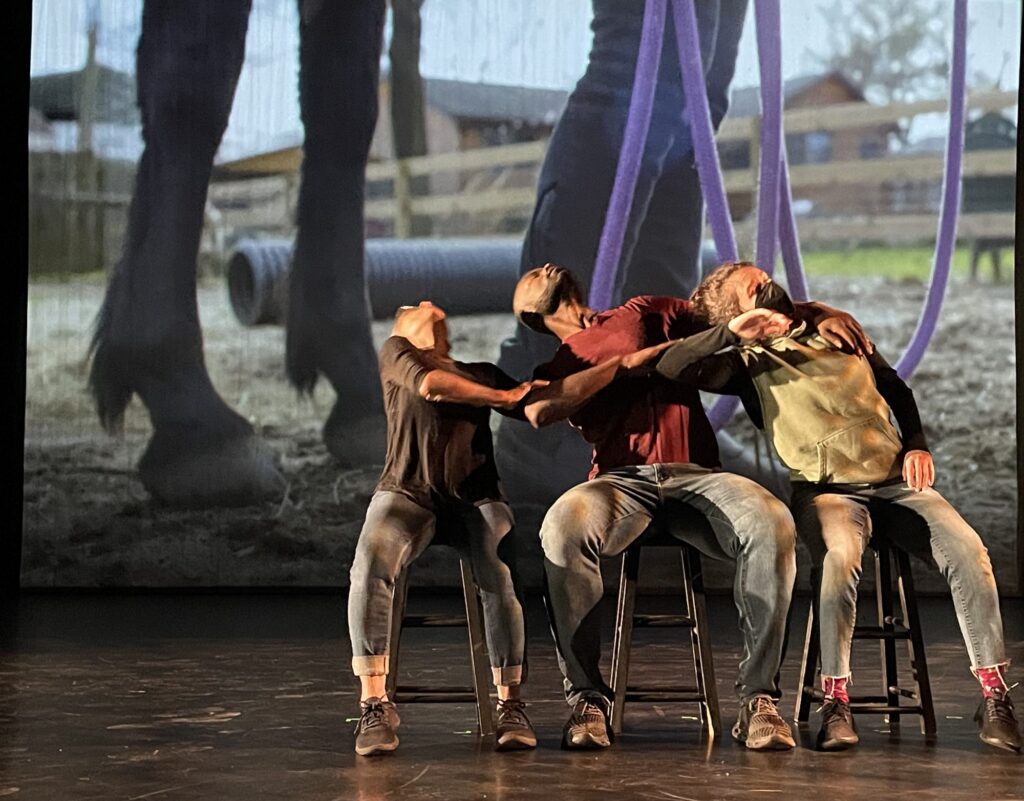
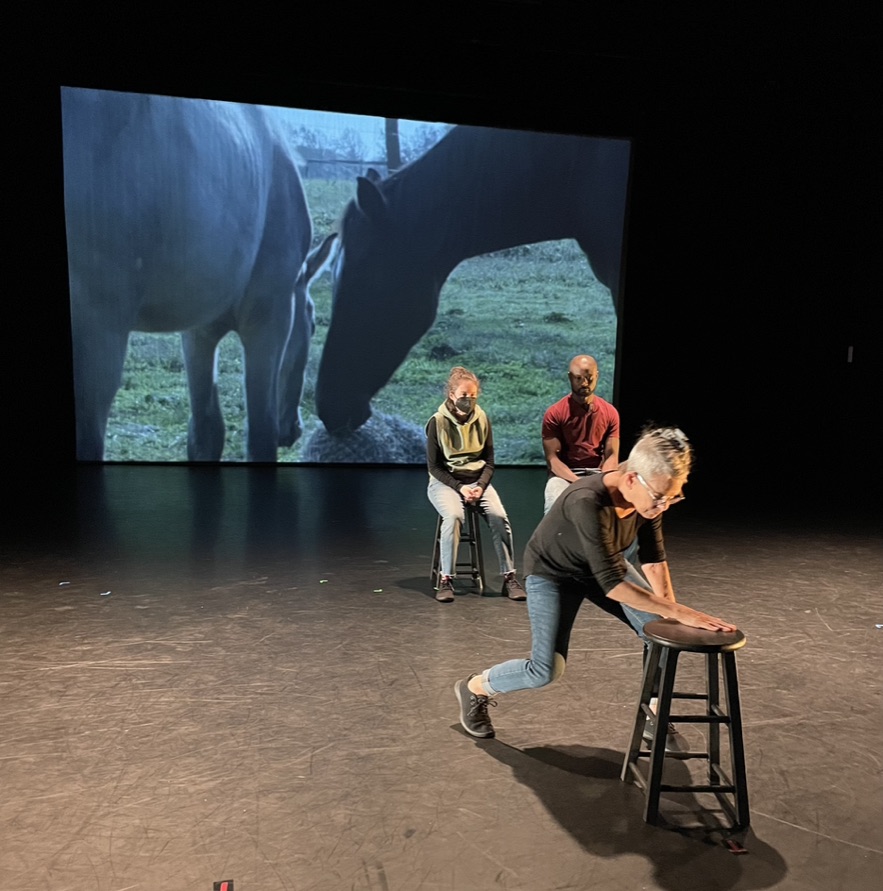

Dance Presentation and Collaboration
The residency culminated in the presentation of Interspecies Journey, a dance theater work that merged live dance with film and narrative storytelling. The event was generously supported by the CLA Ann Gill Visiting Lecture and Artist Award and the Lilla B. Morgan Memorial Endowment, and all activities were open to the public at no cost.
The presenters hoped that the residency sparked ideas for continued inquiry and collaboration across disciplines in study, research, and building relationships with self and others, including other sentient beings.
Interdisciplinary partnerships, shared spaces, finding common ground through practice, and remaining curious can lead to wonderful discoveries.